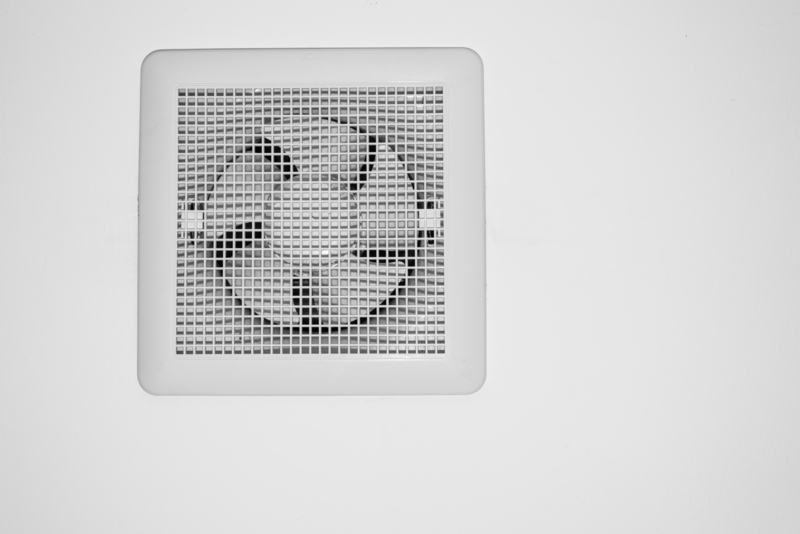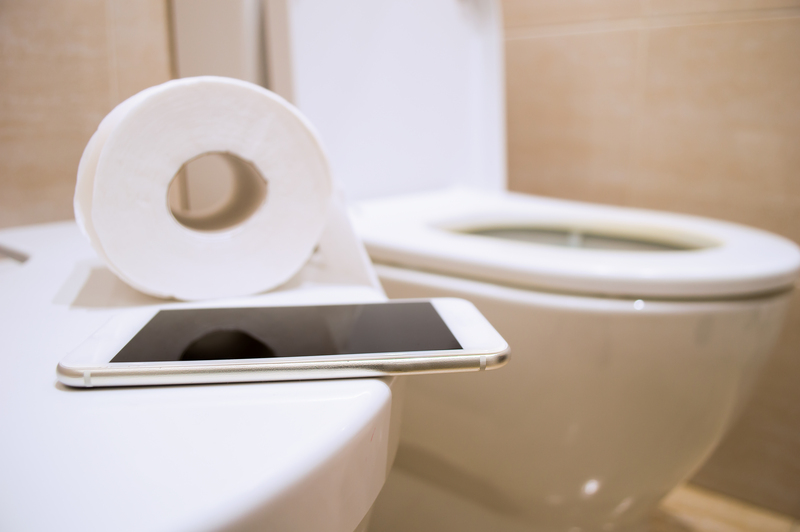Proactive Steps to a Mold-Free Bathroom Sanctuary
Posted on 02/06/2025
Proactive Steps to a Mold-Free Bathroom Sanctuary
Every homeowner dreams of a fresh, clean, and healthy home environment, and it begins with a mold-free bathroom sanctuary. Mold infestation is not only unsightly but can also pose serious health risks and compromise your property's value. Because bathrooms are often humid and damp, they are prime targets for mold growth. The good news is, with proactive strategies, you can prevent mold from ever taking hold in your beloved bathroom retreat.
Why Is Mold Prevention Essential in Bathrooms?
Mold spores thrive in moist, warm environments - conditions frequently present in bathrooms due to showers, baths, and poor ventilation. Ensuring your bathroom remains a sanctuary free from mold is crucial for several reasons:
- Protects your health: Mold exposure can trigger respiratory issues, allergies, and asthma attacks.
- Preserves structural integrity: Mold can rot wood, damage drywall, and compromise grout and tile.
- Enhances aesthetics and comfort: No one enjoys seeing black spots or smelling musty odors in their bathroom haven.
Understanding Mold Growth in Bathrooms
Before you can carry out any proactive mold-prevention measures, it's vital to understand how and where mold develops in the bathroom. Mold flourishes in areas where moisture accumulates and ventilation is limited. Common places to spot mold include:
- Shower and bathtub areas
- Tile grout and caulk
- Behind toilets and sinks
- Ceilings and walls, especially around windows and vents
With this knowledge, you're prepared to embark on truly effective, proactive steps to a mold-free bathroom sanctuary.

Step 1: Ensure Proper Ventilation
Good airflow is the first line of defense in creating a bathroom that resists mold at every turn.
- Install a quality exhaust fan: A properly-sized exhaust fan removes humid air, reducing condensation on surfaces. Make sure it vents completely outside the home.
- Leave the fan on after showering: Run the fan for at least 20-30 minutes post-shower or bath.
- Open windows and doors: Allow natural ventilation whenever possible, especially after use.
If your bathroom lacks windows, consider upgrading to a high-CFM exhaust fan or using a portable dehumidifier periodically. Proper ventilation is essential for a mold-resistant bathroom environment.
Step 2: Control Humidity Levels
Maintaining optimal humidity is a must for any bathroom free from mold. Mold commonly develops when humidity exceeds 60%.
- Use a hygrometer: This simple device helps you monitor bathroom humidity levels. Try to keep the space below 50% humidity.
- Wipe down wet surfaces: After a shower or bath, use a squeegee or towel to dry walls, doors, mirrors, and fixtures. This small action makes a big difference in the war against mold.
- Fix leaks quickly: Even minor drips from faucets, toilets, or pipes can create humid microclimates. Promptly patch and fix any leaks.
Remember, staying ahead of excess moisture is a cornerstone of proactive mold prevention in the bathroom.
Step 3: Select Mold-Resistant Materials
The materials you choose can make or break your mold prevention efforts:
- Mold-resistant paint: Use this on walls and ceilings to create a hostile environment for mold spores.
- Waterproof backer boards and drywall: Traditional drywall can absorb moisture; instead, opt for products labeled as water- or mold-resistant.
- Non-porous surfaces: Choose tile, glass, and acrylic for showers and walls. These surfaces inhibit mold penetration compared to porous materials.
- Silicone-based caulk: Unlike standard caulks, silicone is more resistant to moisture and mildew growth.
Savvy material choices are an effective long-term strategy for a mold-free bathroom sanctuary.
Step 4: Practice Smart Cleaning Habits
Regular cleaning is not only about appearance--it's your best tool for averting mold buildup!
- Clean high-risk areas weekly: Use an anti-microbial or vinegar-based solution on shower tiles, grout, sinks, and faucets.
- Descale and clean drains: Hair and soap scum can trap moisture, leading to mold. Use drain cleaners or physical removal methods monthly.
- Wash shower curtains and liners: Toss liners and washable curtains in the laundry every month, or more often if you spot mold.
- Don't forget hidden spots: Clean behind and beneath toilets, vanities, and cabinetry where moisture may linger unnoticed.
Consistency is key! With these cleaning routines, you're well on your way to maintaining a mold-free bathroom.
Step 5: Promptly Repair and Seal Surfaces
Don't allow cracks or gaps to become gateways for mold!
- Inspect and replace old caulk and grout: Remove cracked or mildewed caulking and grout, then reseal with mold-resistant products.
- Seal tile and stone: Apply a grout or stone sealer annually to help keep out water and prevent mold roots from taking hold.
- Attend to damaged sealants: Notice peeling or puckering around fixtures or baseboards? Reseal immediately to keep moisture out.
This simple maintenance routine is a game-changer for a mold-free bathroom sanctuary.
Step 6: Store Bathroom Items Wisely
Items like sponges, loofahs, bottles, or even bath toys can harbor residual moisture--providing the perfect breeding ground for mold. Smart storage solutions can help:
- Use open, ventilated storage: Wire racks or mesh holders let items air dry quickly.
- Hang towels and bathmats to dry: Never leave them bunched up on the floor or over fixtures.
- Declutter regularly: Dispose of old products and minimize what you keep in the shower area.
- Launder and rotate: Wash bath items and textiles often to keep mildew at bay.
These steps go a long way in supporting your goal of a mold-resistant bathroom retreat.
Step 7: Schedule Regular Inspections
An ounce of prevention is worth a pound of cure when it comes to bathroom mold prevention:
- Monthly visual checks: Inspect high-risk areas, such as behind fixtures, under sinks, and along walls. Look for dark spots, water damage, or musty odors.
- Professional inspections: At least once a year, have a plumber or home inspector assess your bathroom for hidden leaks or water intrusion problems.
Early detection allows you to address moisture and mold before they become costly problems.
Step 8: Educate Your Household
Everyone living in your home should understand how their habits affect bathroom humidity and cleanliness.
- Encourage family members/roommates to:
- Use the exhaust fan during and after showers
- Hang wet towels to dry
- Clean and declutter countertops/shelves after use
- Teach kids about the importance of keeping the bathroom dry and tidy.
Bathroom mold-fighting is a team effort--make it part of your household's shared responsibilities!

Bonus Tips for a Mold-Free Bathroom Oasis
- Introduce moisture-absorbing plants: Certain houseplants, including ferns and peace lilies, help absorb humidity and enhance air quality.
- Upgrade lighting: Sunlight naturally inhibits mold, so maximize natural light or install bright, energy-efficient fixtures.
- Use mold-preventative sprays: Regularly spray high-risk areas with specialized anti-mold products for extra protection.
What If You Discover Mold Despite Precautions?
Even after carefully following these mold-prevention strategies, mold can still creep in. If you spot mold:
- Clean small patches immediately: Use a mixture of water and vinegar, or baking soda, for non-toxic removal. For tough jobs, hydrogen peroxide or store-bought mold removers work well (read all labels and ventilate the space properly).
- Never mix bleach with ammonia or vinegar: This can create toxic fumes.
- Dispose of porous items: If mold has affected shower curtains, bathmats, or drywall, it's often safer to throw them away than attempt deep cleaning.
- When in doubt, consult a professional: Severe or recurring mold infestations may need specialist remediation to prevent return.
Remember, the longer mold sits, the harder it is to remove--and the greater the risk to your health and home.
Creating Lasting Sanctuary: Summing Up Mold Prevention in the Bathroom
Proactive mold prevention is about more than just reacting to visible spores. By planning ahead, maintaining diligent hygiene, and fostering a dry, well-ventilated bathroom, you create a sanctuary that welcomes relaxation--not mold. Here's a recap of the most effective proactive steps to a mold-free bathroom sanctuary:
- Maximize ventilation through fans and windows
- Monitor and control humidity
- Select mold-resistant materials
- Clean and dry frequently
- Repair leaky fixtures and reseal surfaces
- Smartly store and clean bathroom items
- Inspect for water issues and mold monthly
- Get everyone in your home on board
Taking these steps doesn't just prevent mold--it transforms your bathroom into a true wellness oasis that supports healthy living for years to come.
Start implementing these mold-prevention strategies today, and reclaim your bathroom as the clean, calming, and mold-free sanctuary you deserve!
Frequently Asked Questions (FAQs) About Mold-Free Bathrooms
-
How often should I clean my bathroom to keep it mold-free?
It's recommended to clean all high-moisture areas (like showers and sinks) at least once per week, with deeper cleaning and resealing tiles at least quarterly. -
What is the best cleaner for preventing bathroom mold?
White vinegar is an excellent natural mold deterrent. There are also commercial anti-mold sprays and mildew-resistant cleaning products available for stronger protection. -
How long should I run the exhaust fan after showering?
Keep the fan running for 20-30 minutes after use to expel moist air and minimize condensation. -
Is it necessary to replace bathroom grout and caulk?
If you notice cracks, gaps, or discoloration, replace them promptly with mold-resistant alternatives to block moisture from entering crevices.
Act now to build your mold-free bathroom sanctuary--a clean, safe, and rejuvenating space for you and your family!




